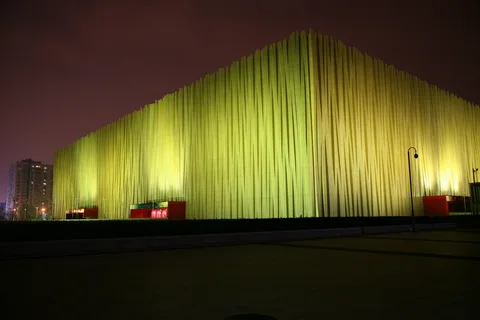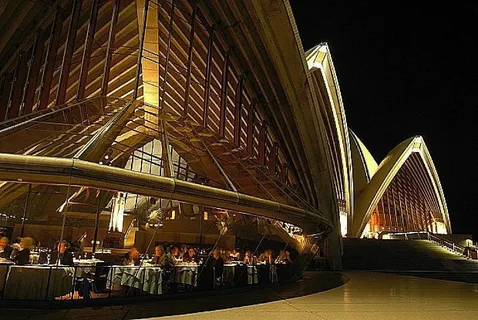Good lighting is essential for creating a stylish and inviting living space. With architectural lighting Sydney, you can take your interior design to the next level with elegant and functional lighting solutions. Whether you want to create an ambiance of tranquility in your bedroom or brighten up a hallway, architectural lighting can help you bring your vision to life. In this blog post, we’ll explore the ins and outs of architectural lighting to help you create the perfect environment for your home.
What Is Architectural Lighting, And Why Is It Important?
Architectural lighting refers to the deliberate and strategic use of lighting fixtures and techniques to enhance the design and functionality of a space. It goes beyond just providing illumination and focuses on creating a desired atmosphere and highlighting architectural features.
So why is architectural lighting important? Well, lighting plays a crucial role in setting the mood and ambiance of a room. It can transform a dull space into a warm, inviting one or make a small room appear larger. It can also enhance the aesthetics of your home, emphasizing key design elements such as artwork or architectural details.
In addition, architectural lighting is essential for creating a functional and comfortable living environment. It allows you to control the level of lighting in different areas of your home, making it easier to perform tasks and navigate through your space.
Whether you want to create a cozy reading nook or a striking focal point in your living room, architectural lighting can help you achieve your vision. It adds depth and dimension to your space, making it more dynamic and visually appealing. So remember to underestimate the power of good lighting – it can transform your home.
Types of Architectural Lighting
When it comes to architectural lighting, there are a variety of options to choose from to enhance your space. Here are some of the types of architectural lighting you can consider:
- Ambient lighting: This type of lighting provides overall illumination to a room and is often the base layer of lighting. It creates a soft and balanced glow, ensuring the entire space is well-lit.
- Task lighting: Task lighting focuses on specific areas where activities such as reading, cooking, or working occur. It provides bright, localized lighting to help you perform tasks with ease and accuracy.
- Accent lighting: Accent lighting highlights specific objects or architectural features, such as artwork, sculptures, or unique architectural elements. It adds depth and visual interest to a space.
- Decorative lighting: Decorative lighting fixtures serve as statement pieces and can be used to enhance the overall aesthetics of a room. They come in various designs, shapes, and sizes, adding personality and style to your space.
By combining these lighting types, you can create a layered and visually appealing space that is both functional and stylish.
Choosing the Proper Lighting for Your Space
When choosing the proper lighting for your space, there are several factors to consider. First, think about the function of the room. For example, a kitchen may require brighter task lighting for cooking and food preparation, while a bedroom may benefit from softer ambient lighting for relaxation.
 Next, consider the size and layout of the space. Larger rooms may require multiple light sources to ensure even illumination, while smaller areas can be enhanced with strategic placement of accent lighting to create visual interest.
Next, consider the size and layout of the space. Larger rooms may require multiple light sources to ensure even illumination, while smaller areas can be enhanced with strategic placement of accent lighting to create visual interest.
Additionally, take into account the style and design aesthetic of the room. Modern and minimalist spaces may call for sleek and simple lighting fixtures, while ornate or antique lighting options can complement traditional or vintage-inspired rooms.
Finally, remember to consider the energy efficiency of your lighting choices. Opt for LED or CFL bulbs, which use less energy and last longer than traditional incandescent bulbs.
By considering these factors, you can choose the proper lighting that not only suits the needs of your space but also enhances its overall design and functionality.
Integrating Lighting into Your Overall Design Plan
Incorporating lighting into your comprehensive design plan is a crucial step in creating a cohesive and stylish space. When done right, lighting can enhance the aesthetic appeal of your room and elevate its functionality.
To seamlessly integrate lighting into your design plan, consider the overall mood and atmosphere you want to create. Are you aiming for a cozy and intimate ambiance or a bright and vibrant space? Choose lighting fixtures that align with your desired vibe, whether it’s sleek and modern or traditional and elegant.
Another essential aspect to consider is the placement of lighting fixtures. Strategically position them to highlight key features in your room, such as artwork, architectural details, or focal points. This will create visual interest and draw attention to these elements.
Additionally, remember to layer your lighting. Combining different types of lighting, such as ambient, task, accent, and decorative, will add depth and dimension to your space. This layering technique creates a dynamic and visually appealing atmosphere.
Remember, the key to integrating lighting into your design plan is balancing functionality and style. Choose lighting fixtures that not only serve a purpose but also complement the overall aesthetic of your room. With the proper lighting, your space will shine in all its glory.
Using Lighting as a Design Statement
Lighting can do more than illuminate a space – it can make a bold design statement and become an integral part of your interior design. Using lighting as a design statement allows you to showcase your style and add a unique touch to your space.
One way to use lighting as a design statement is by choosing unique and eye-catching fixtures. From sleek and modern to vintage-inspired, there are endless options to choose from that can complement your overall aesthetic. A striking pendant light or a sculptural chandelier can become the focal point of a room and instantly elevate its style.
Another way to make a design statement with lighting is by using it to highlight specific architectural features or artwork. By strategically placing accent lights, you can draw attention to unique elements in your space and create a visual focal point.
Feel free to get creative with your lighting choices. Consider using unconventional fixtures, such as string lights or decorative wall sconces, to add a whimsical and playful touch to your space.
Using lighting as a design statement allows you to express your style and create a visually stunning environment. It’s all about finding the perfect balance between functionality and aesthetics to truly make your space shine.
DIY Vs. Hiring A Professional Lighting Designer Sydney
When it comes to implementing architectural lighting in your home, you may be faced with the decision of whether to take a DIY approach or hire a professional lighting designer. While DIY can be a cost-effective option, it may not always yield the best results. A professional lighting designer Sydney brings expertise, creativity, and industry knowledge to the table, ensuring that your lighting design is tailored to your specific needs and vision.
One of the main advantages of hiring a professional lighting designer is their ability to create a cohesive and well-designed lighting plan. They can assess your space, take into consideration your personal style and preferences, and recommend the most suitable lighting fixtures and techniques to achieve your desired look. They have an eye for detail and can spot potential lighting challenges that may arise, ensuring that your lighting design is both functional and aesthetically pleasing.
Another benefit of working with a professional lighting designer is their access to a wide range of lighting products and manufacturers. They are familiar with the latest trends and innovations in the lighting industry and can source high-quality fixtures that fit within your budget. This saves you the time and effort of researching and selecting lighting fixtures on your own.
Furthermore, a professional lighting designer can also help with the installation process. They have the technical knowledge and expertise to properly install and position lighting fixtures, ensuring optimal functionality and performance. They can also collaborate with other professionals, such as electricians and architects, to seamlessly integrate the lighting design into your overall home design plan.
FAQs
Have some burning questions about architectural lighting? Don’t worry, we’ve got you covered. Here are the top 3 FAQs to help clear up any confusion:
1. How do I determine the right lighting fixtures for my space?
Choosing the right lighting fixtures can seem overwhelming, but it doesn’t have to be. Start by considering the function and style of the room. Think about the activities that will take place in the space and the mood you want to create. From there, you can determine whether you need ambient, task, accent, or decorative lighting. It’s also important to consider the size and layout of the room, as well as your personal design preferences.
2. Can I mix different types of lighting in the same room?
Absolutely! In fact, mixing different types of lighting is highly recommended to create a layered and visually appealing space. By combining ambient, task, accent, and decorative lighting, you can add depth and dimension to your room. Just make sure to balance the brightness levels and placement of the different fixtures to achieve optimal lighting.
3. Can I install architectural lighting Sydney on my own or do I need to hire a professional?
While it is possible to install architectural lighting Sydney on your own, it is often recommended to hire a professional lighting designer. They have the expertise and industry knowledge to create a cohesive and well-designed lighting plan. They can also help with the installation process, ensuring that the fixtures are properly positioned and functioning optimally. Hiring a professional can save you time, effort, and potential safety hazards.
So, don’t be afraid to dive into the world of architectural lighting and start creating a stylish and inviting space that truly shines.
Conclusion
Architectural lighting is more than just a practical necessity – it’s a powerful tool that can transform your home into a stylish and inviting space. By strategically using different types of lighting, such as ambient, task, accent, and decorative lighting, you can create a layered and visually appealing environment that enhances both the functionality and aesthetics of your space. Whether you’re looking to highlight architectural features, create a cozy reading nook, or make a statement with a unique lighting fixture, architectural lighting offers endless possibilities. It allows you to set the mood and ambiance of each room, making your home feel more comfortable and inviting. So go ahead and shed some light on your space with architectural lighting – your home will thank you for it!



